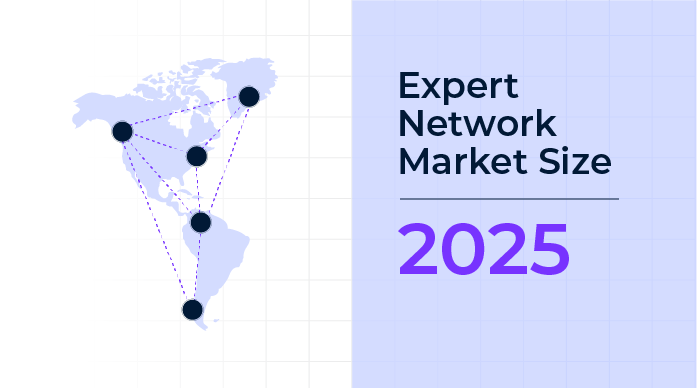
Math nerds are usually boring, so I thought I should un the numbers. I have the latest figures. The global expert network market reached $3.8 billion in 2024 and is set to grow to about $4.4 billion in 2025 at a 16% CAGR.
Companies pay for knowledge they simply do not have access to. And ENs are the quick service restaurant business for insight, giving on-demand insight. They know each expert call can save weeks of research or millions in missteps.
US Expert Network Market Size 2025
It is no surprise that the U.S.A. dominates the Expert Network market. The U.S. will account for roughly 55% of global spend according to IBISWorld. That dominance stems from three sharp models:
- Transaction-based calls priced per hour for C-suite veterans. This is also known as a pay-as-you-go model. The model that Nexus uses.
- Subscription access to mid-tier experts on flat monthly fees
- Hybrid platforms blending AI matching with human vetting
This trio setup meets diverse buyer needs. These include things like private equity due diligence to board-level strategy sessions in real time.
Growth Drivers Behind Expert Network Industry Market Size
The steam behind this engine comes from three core trends:
Private equity rebound
Private equity has recently come under social media fire for causing a lot of problems. But you cannot fault them for being the first and foremost driver of economic growth of expert networks. After 2020’s slowdown, buyout volume roared back. Every new deal demands deep-dive calls to validate models and vet targets. That surge in due diligence work fuels network revenue.
AI adoption surge
Organizations race to embed AI across functions. Companies lack in-house experts on neural nets, data ethics, or model deployment. Just look at how recently, Meta has been collecting AI experts to run its lab like it was a game of Pokémon. Expert networks fill this “I have no idea” void within hours. Turning niche ML know-how into billable time, and global phenomenon.
Regulatory complexity
Data-privacy rules, ESG mandates, insider-trading safeguards, and so on and so forth. All of this has been piling up. The SEC now expects real-time documentation of every expert call. This means logging names, topics, dates, and fees. Networks that excel at audit-grade record-keeping win trust and contracts under these stricter guardrails. Regulation will become more and more relevant as things go on, especially with AI advancements.
Emerging Revenue Streams
Calls aren’t the only profit center. Leading networks now generate:
- Survey products that turn qualitative calls into quick quantitative checks. IDIs are great, but sometimes you need the data.
- Transcript libraries letting clients search past insights on demand. They have started making AI experts now.
- Thematic reports grouping findings by role or industry.
These add-ons are likely (I say likely because trends are still underway) to make up over 25% of top providers’ revenues, further swelling the expert network industry market size.
Future Projections for Expert Network Market Size 2025
Analysts project the expert network market size 2025 at $4.4 billion, backed by:
- Hybrid service models
- AI-powered matching
Beyond 2025, M&A waves will reshape everything. A report suggests that by 2033, total expert network size will likely be hovering around the 12 billion USD mark.
Key Takeaways
- The global expert network market was $3.8 billion in 2024 and will grow to $4.4 billion in 2025.
- The U.S. will drive about $55% of the expert network industry market size next year.
- Private equity deal flow, AI adoption, and regulatory complexity fuel ongoing growth.
- Hybrid survey-call offerings, AI matching, and transcript libraries will shape the expert network market size 2025 and beyond.










